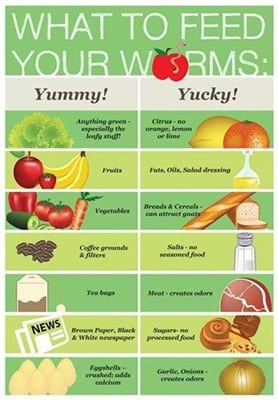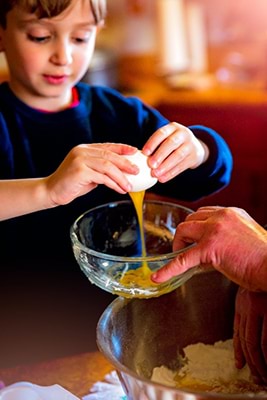Children’s interactions with others take many forms.
As well as social conversations and stories, children learn to make meaning and express ideas through explanations of different concepts and topics.
This section will explore the development of children’s ability to engage with discussions, and make meaning from them.
Most children are innately social, creative and motivated to exchange ideas, thoughts, questions and feelings. (VEYLDF, 2016).
This learning focus has a strong link to the teaching practice questions and investigations sustained shared thinking, which involves educators setting up shared and sustained discussions with children.
The importance of explanations and sharing information
Learning to explain and discuss ideas allows children to learn about and interact with the world around them.
These skills form a foundation for children’s engagement with learning, building knowledge, and making connections to real-world experiences.
There are strong links between children’s language skills used for explanations and sharing information and their ability to engage with early concepts for the arts, mathematics, science, and technology.
Children benefit from many opportunities to generate and discuss ideas, make plans, exercise skills, brainstorm solutions to problems, reflect and give reasons for their choices. They investigate what products and systems can do, and how they work. Increasingly, they begin to use information and communication technologies to assist their thinking and to represent what they know and understand. - VEYLDF 2016
New knowledge builds from sustained interactions and back-and-forth conversation when children are supported by responsive, and intentional educators. During engaging, and differentiated experiences, children can learn about an infinite number of different concepts and ideas. But they also learn about how language works when we explore concepts in detail.
Most children are innately social, creative and motivated to exchange ideas, thoughts, questions and feelings (VEYLDF, 2016).
Key developmental milestones
The following ages and stages are a guide that reflects broad developmental norms but does not limit the expectations for every child.
It is always important to understand children’s development as a continuum of growth, irrespective of their age.
Early communicators (birth - 18 months)
- Communicate mainly with gestures, vocalisations, and facial expressions.
Children are motivated to explore and interact with the world. These earliest attempts at communication eventually develop into the ability to share their observations, insights, and opinions.
Early language users (12 - 36 months):
- Engage in interactions about the here and now
- Choose toys, books, activities to indicate their interests.
From 12 months:
- start to use words as well as nonverbal communication, to show their interests.
From 18 months:
- request information about their interests
- start to answer questions.
From 24 months:
- begin to converse with adults about a single topic of discussion
- will take multiple turns during a discussion
- request repetition if they do not understand
- may start to discuss their feelings and preferences
- (‘I like…’, ‘My favourite … is …’).
Language and emergent literacy learners (30 - 60 months):
- will engage in longer discussions
- ask lots of questions on a favourite topic or thing
- can start to engage with more abstract discussions (e.g. ‘Why do you think the sky is blue?’, ‘Why do we put sunscreen on?’).
From 42 months, begin to use language to:
- report on past events
- reason
- predict
- keep interactions going.
As children’s language becomes more sophisticated they can engage with and communicate more complex ideas and opinions.
Types of explanations and discussions
There are many ways to organise language into larger pieces of information. Stories (i.e. narratives and recounts) are described in the Stories and Narratives focus page. The types explored below include discussions/informative, instructions/procedures, and persuasive.
Discussions/informative
The purpose of this kind of communication is to provide information:
- e.g. ‘describe parts of the face’, ‘explain how plants grow from seeds to sprouts’
We use discussions/informative pieces of language to explore and describe topics in detail
- e.g. what something is, how it works, why something happens, what is important about …
These discussions can be supported by physical props, the environment, visuals (see below), demonstrations, hands-on interactions, or role-plays.
The key to developing children’s participation in discussions is to set up:
- back-and-forth exchanges (educator comments/questions, child comments, and repeat)
- ways of building build from children’s knowledge to new knowledge
- opportunities for the educator to add new information or ask targeted questions.
Examples of early discussions that children may take an active lead in include talking about:
- favourite foods, animals, colours, toys etc.
- how to take care of pets
- how to build using different materials (connecting blocks, sand, playdough)
- what sounds do animals make.
Instructions and procedures
The purpose of instructions/procedures is to outline the logical steps taken to achieve a goal. Common examples of instructions/procedures include:
- recipes
- instructions for games (e.g. how to play Simon Says)
- everyday instructions like how to put your jacket on, how to pack up from snacktime.
Cooking experiences are great opportunities for learning a language, as well as concepts from mathematics, science, and culture.
When we give a set of instructions, we often include the following parts:
- an introduction with an overview of the goal/product
- a list of materials/items we need to complete the task (e.g. ingredients, resources, parts)
- and a sequence of directions that provide step-by-step details.
Instructions/procedures can also be visual and/or written texts, including:
- connective blocks instructions (e.g. Duplo® or Lego® instructions)
- visual recipes (see below)
- treasure hunt instructions/maps.
Visual instructions/procedural texts can help scaffold children’s understanding of verbal instructions, such as in this recipe example. Visual recipe for play dough.
Persuasive
When we use language to try to convince someone of our opinion, we are engaging in a persuasive discussion. Children’s earliest attempts at persuading others usually concern their immediate wants and needs (e.g. Can I play on the … now? I have finished eating!).
When we use persuasive language, there are several features to get our message across: a central idea that we are trying to convince someone of:
- e.g. ‘why we should play with the blocks now’, or ‘why we should read a particular book’
- key reasons/arguments to support our idea
- (and in persuasive with older children): examples or evidence that demonstrate why the arguments are true.
Developing children’s persuasive language typically starts formally in Primary schooling. However, starting to work collaboratively with children to model and practise persuasive language can occur in early childhood settings as well.
Persuasive language is used in conversation or represented visually. Some age-appropriate examples of these sorts of discussions/visual representations could include:
- Discussions about the room/group expectations
- Poster showing why we should respect and care for one another
- Discussions or a poster providing reasons to recycle
- A video demonstrating why art is fun.
Theory to practice
Explanations and sharing information are an important part of the Social and Academic Uses of Language, in line with Bloom and Lahey’s (1978) Form Content and Use model.
Children learn to use language to talk about new concepts, and to express their opinions and perspectives. This is achieved by hearing more knowledgeable peers using language in this way—as per the sociocultural theories of language development (Vygotsky, Bruner).
Creating opportunities for sustained shared thinking allows for deep engagement with ideas and concepts that build upon children’s existing knowledge (Sylva, Melhuish, Sammons, Siraj-Blatchford, & Taggart, 2004).
Evidence base
It is not only the quantity of language that children hear that matters. The quality of the input also makes a big difference. Improvements in later language skills develop when children participate in engaging and meaningful discussions which build on their knowledge and understanding of the world.
These experiences provide opportunities for children to use language to learn new concepts/skills, express their opinions, engage in multi-turn interactions, and use more abstract questions and vocabulary (Hart & Risley, 1995; Sylva et al., 2004).
These rich language experiences are also linked to greater educational achievement later in life (Hart & Risley, 1995).
Links to VEYLDF
Victorian Early Years Learning and Development Framework (VEYLDF, 2016)
Outcome 1: identity
Children feel safe, secure and supported:
- openly express their feelings and ideas in their interactions with others
- respond to ideas and suggestions from others.
Children develop their emerging autonomy, inter-dependence, resilience and sense of agency:
- increasingly cooperate and work collaboratively with others
- begin to initiate negotiating and sharing behaviours.
Children learn to interact with others with care, empathy and respect:
- express a wide range of emotions, thoughts and views constructively
- reflect on their actions and consider consequences for others.
Outcome 2: community
Children develop a sense of belonging to groups and communities and an understanding of the reciprocal rights and responsibilities necessary for active civic participation:
- cooperate with others and negotiate roles and relationships in play episodes and group experiences
- broaden their understanding of the world in which they live
- express an opinion in matters that affect them
- build on their own social experiences to explore other ways of being.
Outcome 3: wellbeing
Children become strong in their social, emotional and spiritual wellbeing:
- seek out and accept new challenges, make discoveries, and celebrate their efforts and achievements and those of others
- increasingly cooperate and work collaboratively with others
- show an increasing capacity to understand, self-regulate and manage their emotions in ways that reflect the feelings and needs of others.
Outcome 4: learning
Children develop dispositions for learning such as curiosity, cooperation, confidence, creativity, commitment, enthusiasm, persistence, imagination and reflexivity:
- express wonder and interest in their environments
- are curious and enthusiastic participants in their learning
- participate in a variety of rich and meaningful inquiry-based experiences.
Children develop a range of skills and processes such as problem solving, inquiry, experimentation, hypothesising, researching and investigating:
- apply a wide variety of thinking strategies to engage with situations and solve problems, and adapt these strategies to new situations
- explore their environment
- manipulate objects and experiment with cause and effect, trial and error, and motion
- use reflective thinking to consider why things happen and what can be learnt from these experiences. Children transfer and adapt what they have learnt from one context to another
- engage with and co-construct learning
- use the processes of play, reflection and investigation to problem-solve.
Children resource their learning through connecting with people, place, technologies and natural and processed materials:
- engage in learning relationships
- experience the benefits and pleasures of shared learning exploration
- use information and communications technologies (ICT) to investigate and problem-solve
- explore ideas and theories using imagination, creativity and play
- use feedback from themselves and others to revise and build on an idea.
Outcome 5: communication
Children interact verbally and non-verbally with others for a range of purposes:
- interact with others to explore ideas and concepts, clarify and challenge thinking, negotiate and share new understandings
- express ideas and feelings and understand and respect the perspectives of others.
Children begin to understand how symbols and pattern systems work:
- begin to make connections between, and see patterns in, their feelings, ideas, words and actions, and those of others
- notice and predict the patterns of regular routines and the passing of time.
Children use information and communication technologies to access information, investigate ideas and represent their thinking":
- use information and communication technologies to access images and information, explore diverse perspectives and make sense of their world
- engage with technology for fun and to make meaning.
Related experiences plans and videos
Early language users (12 - 36 months)
Language and emergent literacy learners (30 - 60 months)
Learning foci and teaching practices
Discussions and investigations to develop literacy
Engaging children in meaningful, responsive, and intentional discussions is a key teaching practice and essential for developing children’s oral language and communication.
Stories and narratives
Children’s engagement with stories are an important focus of oral language development.
Updated

